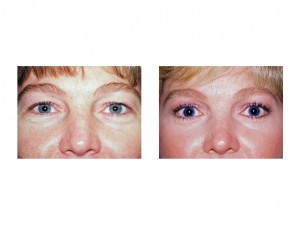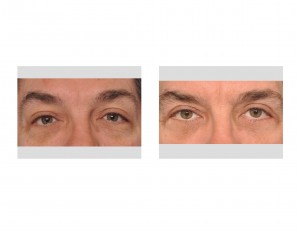One of the most facial aging surgeries is that of blepharoplasty or the removal of excessive eyelid skin. It is most common because everyone develops redundant skin of the eyelids with enough age and everyone has four eyelids. Even for those patients not driven by a desire for an aesthetic improvement, an upper blepharoplasty is more common than a lower blepharoplasty because it can cause functional symptoms. The weight and hanging of excessive upper eyelid skin can push down on the lash lines, making the upper eyelids heavy and causing upper visual field impairment.

In the May 2014 issue of the Journal of Plastic, Reconstructive and Aesthetic Surgery, an article was published entitled ‘The Effect of Upper Eyelid Blepharoplasty on Eyebrow Position’. In this paper, a total of 140 consecutive patients who had upper blepharoplasty due to superior visual field obstruction were studied with before and after measurements of their eyebrow position. In addition, horizontal forehead lines were classified by degree. Their results showed that there was an average very slightdrop in eyebrow position by measurement. (less than 1.5%) This was not visibly detectable with the exception in some men. In men, one of of six displayed a significant lowering of the eyebrow position. The sample size of men was small (14) compared to that of women. (126) Before surgery lifting of the eyebrows by means of frontalis muscle activity did not influence the position of the eyebrows after surgery, although forehead horizontal lines did seem to diminish significantly afterwards.

Dr. Barry Eppley
Indianapolis, Indiana


